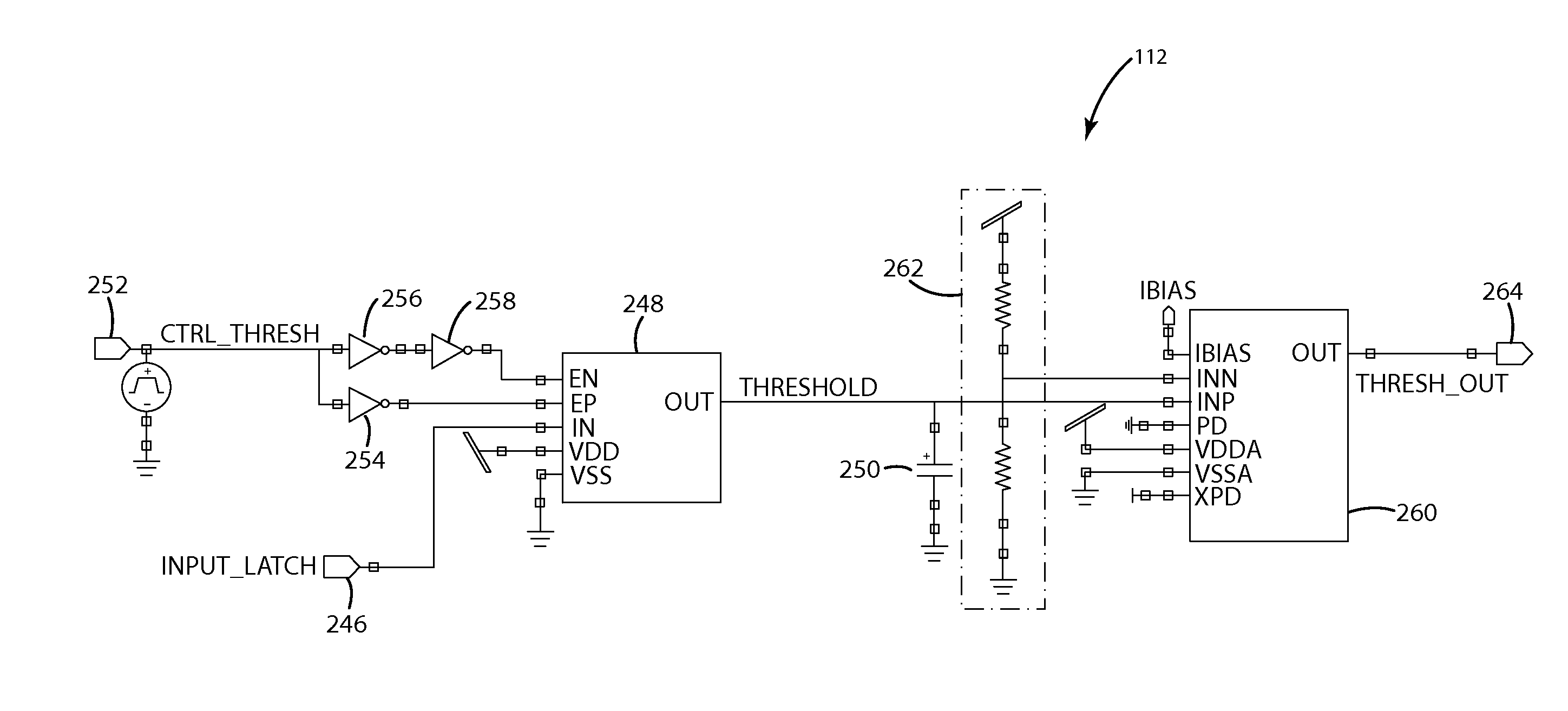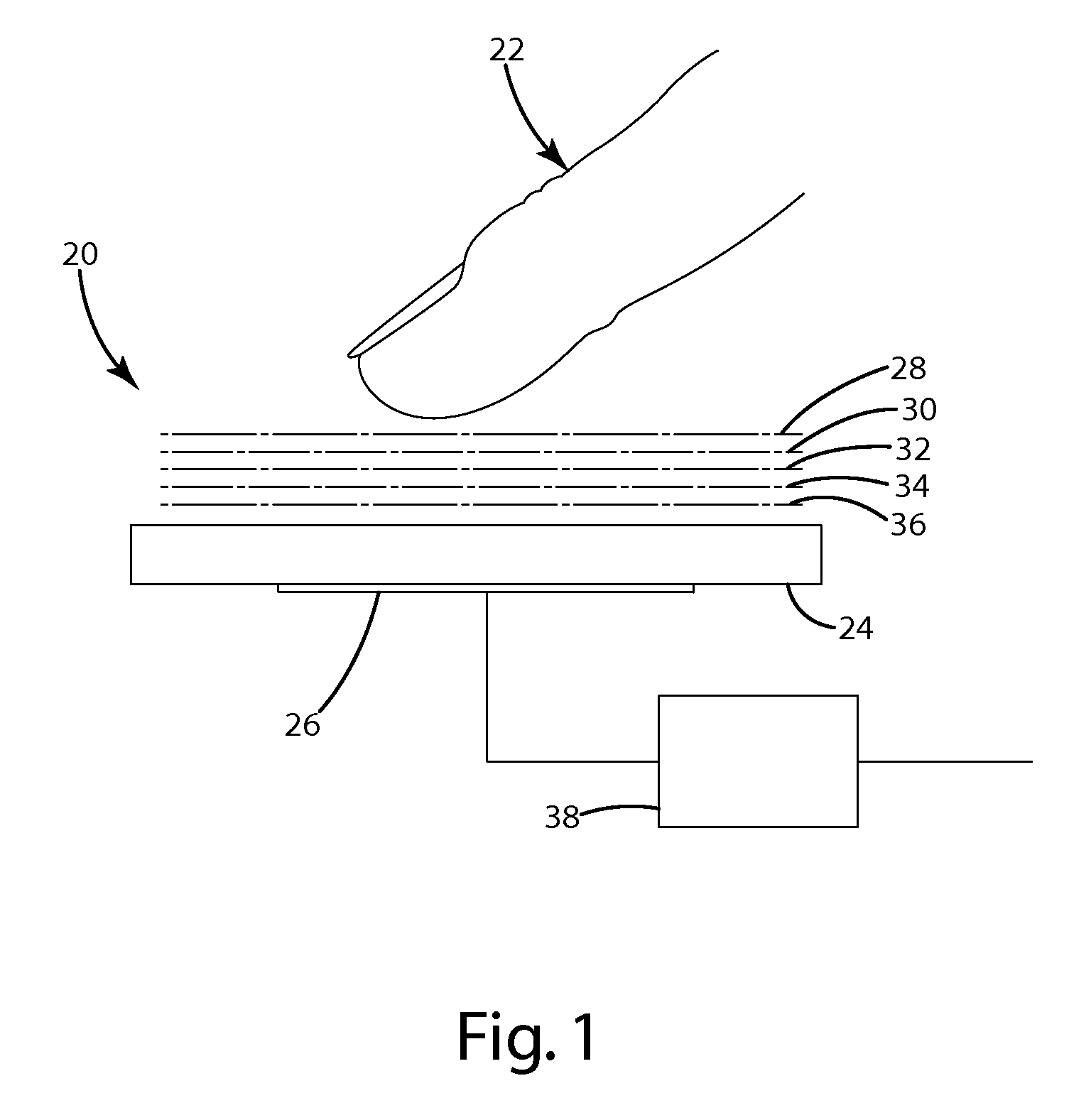Apparatus and method for determining a touch input
a technology of touch input and apparatus, applied in the direction of resistance/reactance/impedence, instruments, pulse techniques, etc., can solve the problems of not accurately registering desired touches, unable to accurately register touch input, and being susceptible to nois
- Summary
- Abstract
- Description
- Claims
- Application Information
AI Technical Summary
Problems solved by technology
Method used
Image
Examples
Embodiment Construction
[0025]The invention as contemplated and disclosed herein can greatly improve the performance of capacitive sensors over known capacitive sensing systems and methods. In particular, the system and method set forth below utilizes the rate of change of a capacitive sensor output, the absolute value of which remains positive as an object approaches the capacitive sensor from some distance away, and which rapidly declines as the object comes to rest relative to the capacitive sensor.
[0026]For example, consider again FIG. 1, which depicts a human finger 22 as moving toward a touch substrate 24, a capacitive sensor 26 and an associated measurement circuit 38. As the finger 22 is positioned at a first distance 28 relative to the substrate 24, the finger 22 is far enough from the capacitive sensor 26 that there is effectively no stimulus condition. If the finger 22 were moved closer at a second distance 30, there would be a slight amount of capacitive change at the capacitive sensor 26 and t...
PUM
 Login to View More
Login to View More Abstract
Description
Claims
Application Information
 Login to View More
Login to View More - R&D
- Intellectual Property
- Life Sciences
- Materials
- Tech Scout
- Unparalleled Data Quality
- Higher Quality Content
- 60% Fewer Hallucinations
Browse by: Latest US Patents, China's latest patents, Technical Efficacy Thesaurus, Application Domain, Technology Topic, Popular Technical Reports.
© 2025 PatSnap. All rights reserved.Legal|Privacy policy|Modern Slavery Act Transparency Statement|Sitemap|About US| Contact US: help@patsnap.com



